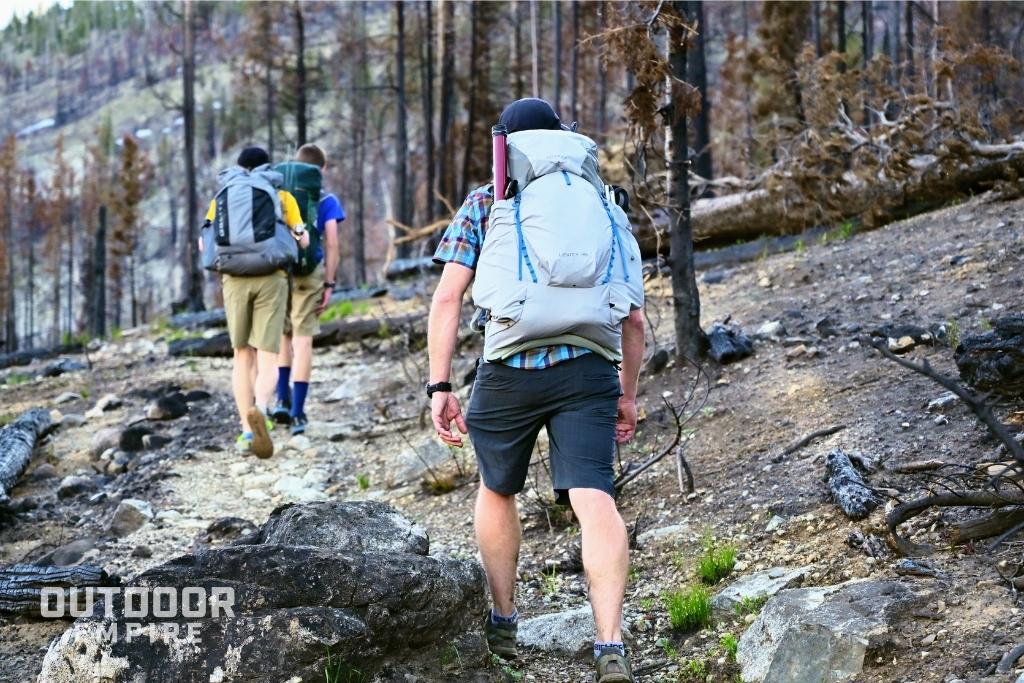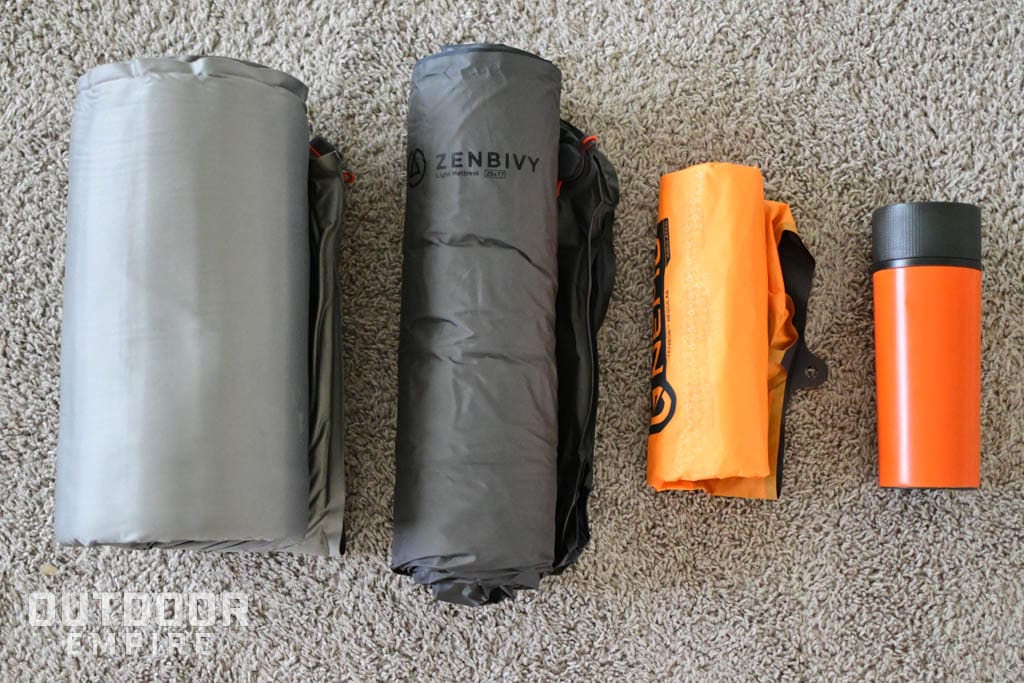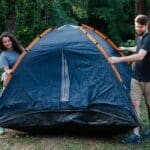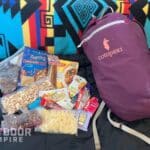Backpacking is a term with many meanings. You could go “backpacking across Europe” which could just be carrying a giant backpack on planes instead of a roller suitcase. Or you could go “backpacking for a day” meaning you carry a simple backpack with water and snacks for a day hike.
Then there is this notion of lightweight or ultralight backpacking. And those who are into it will be the first to clue you into the fact that you’re some kind of normal backpacker.
So what does ultralight even mean?! And at which point am I part of the club?
While there is no formal definition for it, ultralight backpacking is considered by many to mean you have a base weight of 10 pounds or less. Whereas a lightweight or typical backpacker could have a base weight of up to 30 pounds. Ultralight backpacking is an extremely condensed form of backpacking.
Don’t worry, I’ll tell you what base weight means and what the differences are between regular backpacking and ultralight below. I’ll also include some of our highly recommended ultralight backpacking gear.
Backpacking Basics
In order to understand what ultralight backpacking is, you’ve got to understand what we’re comparing it to. Here’s a little breakdown.
Backpacking Categories
When looking at the different backpacking categories, there are more than you might have thought. Backpacking as a sport has grown in popularity over the years. And as it has grown, different categories have emerged.
Different backpacking categories and their associated base weight targets are as follows:
- Conventional Backpackers: Carry a pack with a total weight of around 35 pounds or more. They simply go by total pack weight and don’t measure a base weight. Steak for dinner!
- Lightweight Backpackers: Carry a pack where the base weight should not exceed 20 pounds. Kudos on your gear upgrades!
- Ultralight Backpackers: Carry a pack where the base weight should not exceed 10 pounds. Slow down for us in the back, would ya’?!
- Super Ultralight Backpackers: Carry a pack where the base weight should not exceed 5 pounds. Hope you sleep well in that space blanket!
Let me re-emphasize that the weights listed above are not defined specifically by any particular authority on the matter. They are simply reasonable delineations based on general trends within the backpacking community.
Don’t get too hung up on the numbers!
Base Weight
Base weight is defined as the weight of your gear, minus all consumables like food, water, and fuel. It typically includes all the staple gear for a backpacking trip like your backpack, tent or shelter, sleeping bag and pad, cooking system, and clothing.
Your pack will obviously end up weighing more than 10 pounds as an ultralight backpacker once you add in your consumables. But by keeping your base weight consistent and lean, you can control the overall weight of your pack.
Ultralight Backpacking Gear
While it may seem impossible to get a base weight down to ten pounds, the ultralight camping and backpacking gear market has expanded drastically in the last ten years.
Ultralight material may wear out more quickly than the regular material used in camping gear. However, when you are hiking for days on end and living off of only what’s in your backpack, you’ll probably prefer the lighter weight over years of durability.
Several companies have developed products for their customers which are durable and lightweight. Some of these products have quickly gained popularity and earned themselves a good name within the backpacking community.
How to Go From Lightweight to Ultralight Backpacking
Four main items can be exchanged for items lighter in weight to go from lightweight, or even conventional, to ultralight. These include the tent, backpack, sleeping bag, and sleeping pad.
A close fifth item where you can shed the most weight is in your cook stove or cooking system in general.
Tent
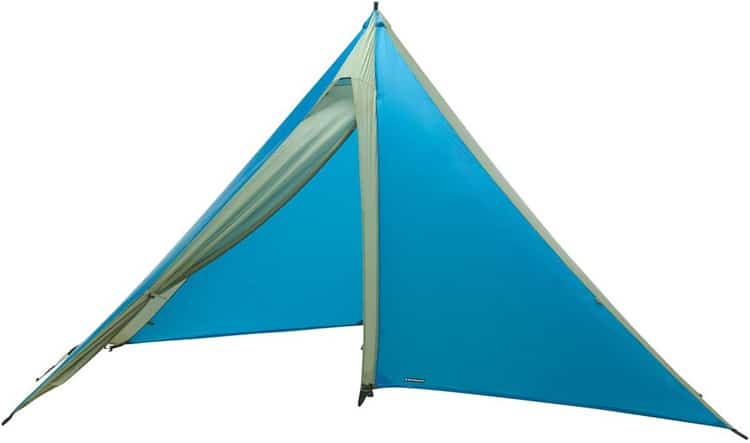
Most ultralight tents are freestanding, meaning the weight and bulkiness of tent poles and stakes are not an issue. These tents can often fold up to an extremely small space and weigh between 1 to 1.5 pounds.
We have a great article where we review the Best Backpacking Tents, including ultralight tents.
Backpack
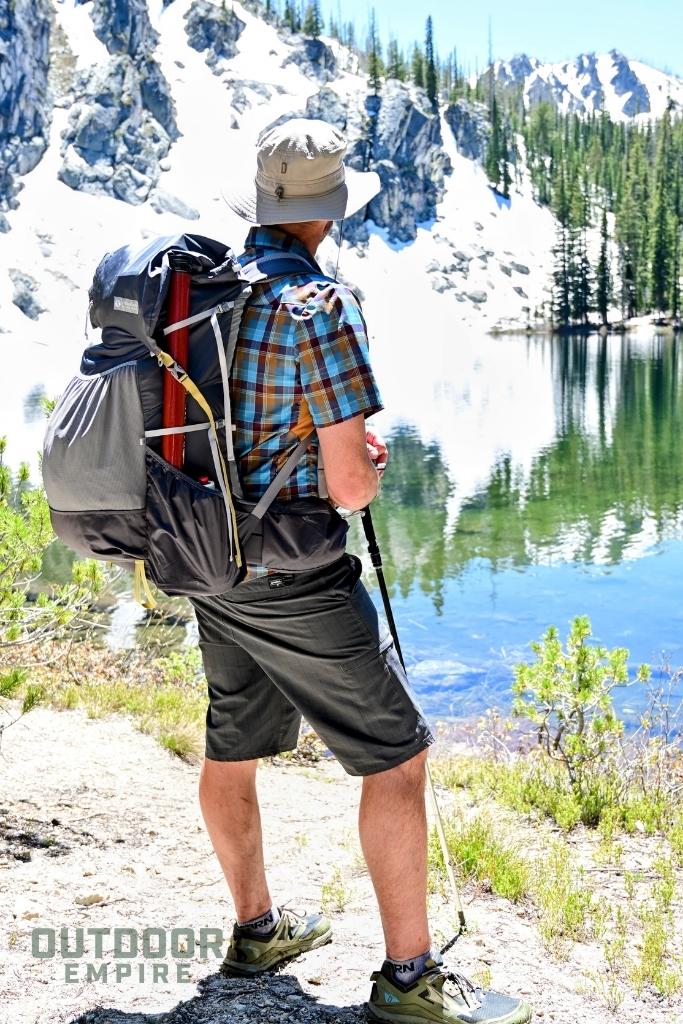
Recommended: Best Ultralight Backpacks Buyer’s Guide (Hands-on Reviews)
The packs with a frame weigh a bit more but they are able to shift the weight to the hips. This means they are more comfortable and can also carry more weight. While the backpack’s weight and style are more of a personal preference, there are a few highly-rated backpacks that we recommend.
Hyperlite Mountain Gear Junction Ultralight Backpack: For the experienced backpacker looking for a tough, minimalist pack. This pack is for the person that values a lower weight over features. It is not, however, for the budget-conscious backpacker.
Gregory Focal 48 Pack: For the experienced backpacker looking to decrease your pack weight but still want the look and features of a more traditional pack. It is light, comfortable, and well-organized.
Gossamer Gear Gorilla 50 Backpack: This pack is for people who count grams, weigh every piece of gear, and cut off the spoon’s handle to keep the base weight down. It’s for people doing long days in the 25 to 35-mile range with a base weight of 7 to 11 pounds and a total weight of 20 to 30 pounds. It is not a pack for the casual backpacker or beginners. It is for the person that wants a pack stripped of everything that is not essential.
Sleeping Bag or Quilt
A quality sleeping bag just might be the most important item you take. You must get a good night’s sleep while on the trail. Finding a balance between warm but not bulky is a challenge.
You have a couple of different options when looking for your bedding. You can go with a traditional sleeping bag or with a backpacking quilt. The quilt offers more room to wiggle and to stick your feet out when you get hot, and it generally cuts some weight over a sleeping bag. But if you like to be snug as a bug in a rug, then you should stick to the sleeping bag.
The REI Magma 15 and 30 are popular spring and fall camping options because of their warmth and comfortability. Weighing in at 1 pound and 12 ounces and with a price tag of under $400, these super light sleeping bags are very desirable and come highly rated.
We recommend the ZenBivy Light Bed for ultimate comfort and portability. It’s a sleeping bag-quilt hybrid and is warm and durable and not too heavy.
Sleeping Pad
Sleeping pads may not seem like a necessity, but when you are literally living outside for days on end and sleeping on the ground, you will want something comfortable that helps you get a good night’s sleep.
Sleeping pads are generally rated on how well they keep you warm (since you are laying on cold ground) and how comfortable they are for those who move around a lot in their sleep. They’re also rated based on their price and weight.
One pad that ranks among the highest for summer backpacking is the Therm-A-Rest NeoAir UberLite. Weighing in at a whopping 8 ounces with a price tag of under $300, this sleeping pad is a safe bet for ultralight backpackers willing to pay top dollar to cut weight.
One of the highest-ranked four-season sleeping pads comes from the same company: the Therm-A-Rest NeoAir XTherm. This pad weighs 15 ounces and comes in under $250. This pad helps insulate sleepers and is ideal for cold sleepers and winter camping.
Conclusion
The right ultralight backpacking gear will only make your experience on your next adventure better and easier. Consider what existing gear you can swap out for something lighter. Start with your pack, tent, sleeping bag, and sleeping pad.
Start with one item at a time and progress as your budget allows. Once you have the right gear and have trained properly, ultralight backpacking can be extremely fun and rewarding.
Reference: Wikipedia, accessed on 9/22/2022, and my own experience.

